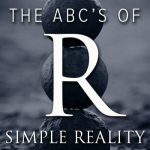
Charles Darwin’s “Theory of Evolution” will not fare well in this article; but first a short anecdote. In 1954 Jacquetta Hawkes, in a book called Man on Earth, supported the controversial idea that evolution of life on Earth was not exclusively the result of natural selection. Biologist Sir Julian Huxley wrote to her and accused her of “unforgivable ignorance, arrogance and impertinence.”[i] We continue with some impertinence of our own.
We will let David Foster begin with the definition of reductionism. “Reductionism is that attitude of mind which only feels it can keep in touch with reality if it narrows its outlook to specific facts, and preferably facts which can be interpreted in numbers or what Eddington called ‘pointer readings.’”[ii]
Jacquetta Hawkes provides a supplemental definition: “Reductionist thought suggests that the whole is no more than the sum of its parts and so leads to an old-fashioned mechanistic view.”[iii] Mechanical models of reality, including Darwinism, have been outdated since 1900.
David Foster, trained at King’s College in London, continues with the implications of the failed reductionist’s approach, not only in science but in defining reality itself.[iv]
The Reductionist believes in:
The velocity of light
Avogadro’s number
Planck’s constant
The mass of a neutron
The charge on the electron
I [Foster] also believe in these things but they leave out almost the whole of Actuality including:
The nature of human beings
Biology and life
Art, philosophy and religion
Even within the field of physics the Reductionist point of view cannot account for:
Relativity
Quantum physics
The Uncertainty principle
The Exclusion principle
If Reductionism isn’t the answer in responding to The First Great Question (Where Am I?) then what is? Two Cambridge scientists start us toward that answer. First, Sir Arthur Eddington found that the study of physics led not to “things” but to mathematics and pronounced that “the stuff of the world is mind-stuff.” That’s good as far as it goes but more is needed because we need to know “whose mind?”
Secondly, Sir James Jeans concludes, logically enough that it is the mind of GOD that creates. “If the universe is a universe of thought, then its creations must be an act of thought.”[v] “This could be validated by Einstein’s matter-tensor, which gave the mathematics whereby substance (mass-energy) could be accounted for by pure non-Euclidian geometry, i.e., ‘the shaping of the void.’”[vi]
In other words God shapes the void by thought which brings us full circle to including all of us in the creation process. Seth says that we create our own reality. Foster agrees that we human beings create our own reality by imagination which takes place in the Void (the 19th century “ether”). Today, the Void can be called Simple Reality, the narrative that connects all of Creation into one interconnected, interrelated and interdependent evolutionary process. The energy that drives this creation is compassion.
In P-B reductionism has been the process of pursuing the smallest particle of matter in hopes of finding the basic building block of the universe. It seems at this point that matter is composed of both particles and waves or some would say various kinds of “quarks.” Our identification with matter or form perpetuates the illusion that reality is “out there” rather than within. This belief is part of the foundation for human suffering and our inability to create a sustainable human community.
In P-A that which changes is not real, including matter, and does not have substantial reality. Only that which does not change is real. That means that all form is ephemeral or impermanent and that we cannot base a sustainable human community on that worldview. Instead we can reduce reality to energy itself as the immutable and indestructible substance of all of Simple Reality. By having energy as our identity, we can then create a sustainable and rational human story.
[i] Foster, David. The Philosophical Scientists. New York: Dorset Press, 1985, p. 47.
[ii] Ibid., pp. 47-48.
[iii] Ibid., p. 48.
[iv] Ibid., p. 48-49.
[v] Ibid., book jacket.
[vi] Ibid.


